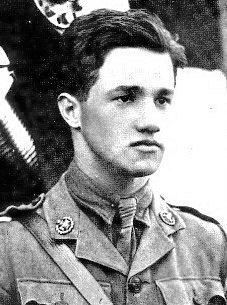Liverpool Daily Post, "How Ball Conquered Immelman. Thrilling Story Of Challenge And Duel."
Liverpool Daily Post, "How Ball Conquered Immelman. Thrilling Story Of Challenge And Duel."
known 28th December 1917
According to the "Literary Digest," Immelman, the famous German aviator, met his death in a prearranged duel with the British airman Captain Ball, of Nottingham, who himself was killed at a later stage in the war. The story of the duel, which was declared to have been one of the most sensational events of the war, is told in a letter written by Colonel William Macklin, of the Canadian troops, to a friend in Newark, New Jersey. Colonel Macklin was one of the eye-witnesses of the fight. One morning, Captain Ball, who was behind our sector, heard that Immelman was opposite. "This is the chance I've been waiting for. I'm going to get him," declared Ball. Friends tried to disuade him, saying the story of Immelman's presence probably was untrue. Ball would not listen. Getting into his machine, he flew over the German lines, and left a note which read: - "Captain Immelman, - I challenge you to a man-to-man fight, to take place this afternoon at two o'clock. I will meet you over the German lines. Have your anti-aircraft guns withhold their fire while we decide which is the better man. The British guns will be silent. - BALL." About an hour afterwards a German aviator swung out across our lines. Immelman's answer came. Translated, it read:- "Captain Ball, - Your challenge is accepted. The German guns will not interfere. I will meet you promptly at two. - IMMELMAN." Just a few minutes before two o'clock the guns on both sides ceased firing. It was as though the commanding officer had ordered a truce. Long rows of heads popped up, and all eyes watched Ball from behind the British lines shoot off and into the air.A minute or two later Immelman's machine was seen across No Man's Land. The letter describes the tail of the German machine as painted red, "to represent the British and French blood it had spilled," while Ball's had a streak of black paint to represent the mourning for his victims. The machines ascended in a wide circle, and then, says Colonel Macklin, "From our trenches there were wild cheers for Ball. The Germans yelled just as vigorously for Immelman. The Germans increased in volume, ours changed into cries of alarm. "Ball, thousands of feet above us and only a speck in the sky, was doing the craziest of things imaginable. He was below Immelman, and was apparently making no effort to get above him, and thus gain the advantage of position. Rather, he was swinging around, this way and that, attempting, it seemed to postpone the inevitable. We saw the German machine dip over preparatory to starting the nose dive. "He's gone now," sobbed a young soldier at my side, for he knew Immelman's gun would start its raking fire once it was being driven straight down. Then, in a fraction of a second, the tables were turned. Before Immelman's plane could get into firing position Ball drove his machine into a loop, getting above his adversary, cutting loose with his gun, and smashing Immelman by a hail of bullets as he swept by. "Immelman's airplane burst into flames and dropped. Ball, from above, followed for a few hundred feet, ,and then straightened out and raced for home. He settled down, rose again, hurried back, and released a huge wreath of flowers almost directly over the spot where Immelman's charred body was being lifted from a tangled mass of metal."
Created by: , Hannah21187
-

Born 1896
Died 1917
British Army Captain Nottinghamshire and Derbyshire Regiment 7th (Robin Hood) Battalion Sherwood Foresters
Air Force (RAF/RFC) Captain Royal Flying Corps
More about Albert Ball
